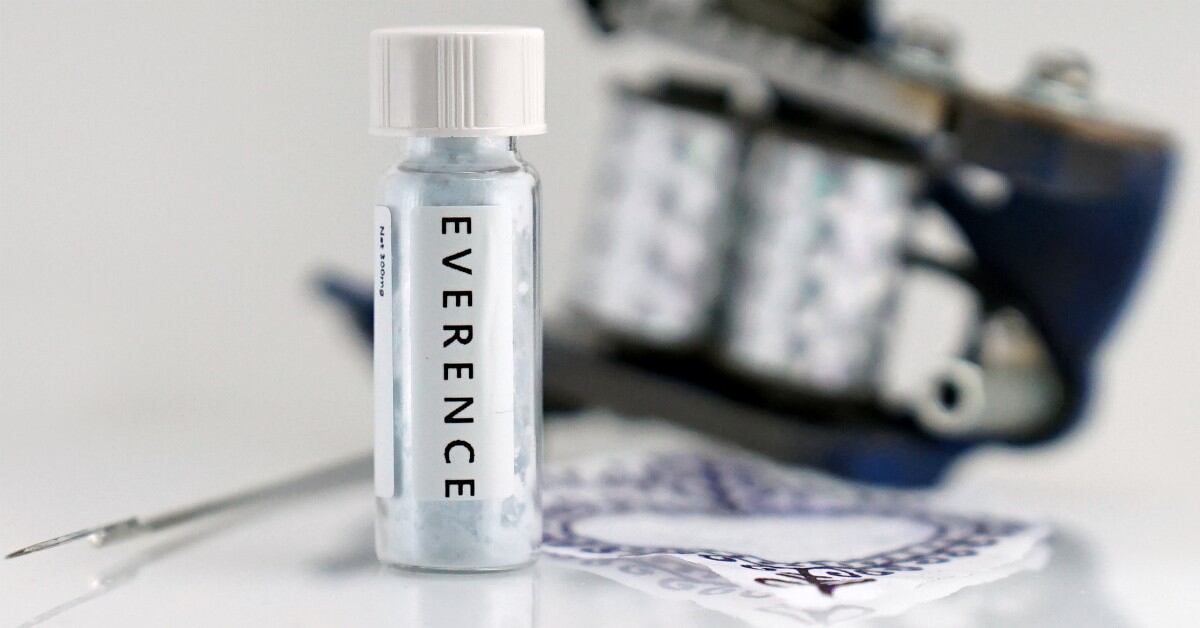VIRGINIA BEACH, Va. — Boyd and Wanda Renner used to look at the stars at the same time to feel connected during their long months apart over his 28-year Navy career.
Now, the retired SEAL takes a microscopic piece of his wife with him wherever he goes: her DNA.
“I’m taking the part of my wife that’s the most significant part of her,” said Renner, 49, minutes before going under the needle for the first time in a Virginia Beach tattoo shop. “Her DNA is what makes her her. And to have that encapsulated and placed inside a tattoo for other people to see — and for me to share, if I choose to share, her story — it’s just powerful.”
Wanda Renner’s DNA is infused into a fresh tattoo on his left calf, done in her honor. The tattoo shows lungs interwoven with black and red roses, symbolic of Wanda Renner’s battle with cystic fibrosis, an incurable genetic disease that limits lung function.
DNA-infused tattoos weren’t on Renner’s radar — or really anyone’s, for that matter — until he retired from the military in 2016 and got a call from Patrick Duffy, co-founder of a Delaware-based nonprofit for wounded warriors and Gold Star families. Inspired by a Gold Star mother’s tattoo, Duffy had been brainstorming ways to take personal memorials like hers to another level.
The two co-founded Endeavor Life Sciences last year and have been working on new ways to preserve memories.
First up: getting cheek swabs into ink through a product called Everence.
How it works
Everence, a combination of the words “forever” and “reverence,” starts with a collection of saliva, similar to what people send to Ancestry.com to learn more about their heritage, explained Duffy, the product’s inventor.
After collection, the DNA goes to the company’s lab in Rhode Island, where it’s amplified, purified and wrapped in a medical-grade polymer — the kind that’s used for pacemakers or contact lenses. To the naked eye, it looks like fine powder or tiny beads that can be put into the ink or carrier solution of any new or existing tattoo.

It’s totally safe, said Edith Mathiowitz, a Brown University professor of medical science and engineering who works as a consultant for the company.
“When you kiss each other, you transfer DNA from one to another,” she said. “(Everence) is safer because it’s done under very controlled conditions.”
The polymer encapsulates the DNA, so it won’t leak beyond the application site.
For Renner, that was the red rose on the top right of the new tattoo. Designed by a woman with cystic fibrosis, the drawing is a play on words, as children who can’t pronounce the name of the disease sometimes call it “65 roses.”
“The roses that are in bloom and the leaves represent life inside. So, even though we’re dying inside and our lungs are diseased, we still have life,” said Wanda Renner. “It’s something that kind of embodied our journey together with living with CF.”
25 years
“As I’ve aged, the disease has taken its toll on my body. I think it’s been hard on him because I think now reality is starting to hit,” Wanda Renner said.
A few months ago, she got asthma as well, and her lung capacity dropped to around 35 percent. Though that number has since improved, Boyd Renner decided it was time to go through with the tattoo.

“She’s been my hero since the day we met,” he said, inspired by his wife’s routine of morning and evening treatments while she works as an accountant and also makes time for long-distance running — and that she did it alone for much of their marriage while he went on missions all over the world. “She is what inspires me, and that’s what Everence is all about, is what inspires you and what you would want to have with you forever.”
The future of Everence
Once you look at it that way, the product sells itself, Boyd Renner said.
“The genetic makeup of your loved one is just deeper than that shoestring, deeper than that picture” that people carry with them into war, he said.
At a starting cost of $295, with a discount for military and first responders, Everence has been patented in the U.S. and 18 other countries, Duffy said. The creators have heard stories of it being used to honor spouses, parents, children, siblings, and even pets.
“Wanting to stay connected to someone is a pretty natural feeling that most people can relate to,” said Duffy, who has tattoos with the DNA of his parents and 4-year-old daughter. “Clearly it’s about memorializing, but it’s also very much about paying tribute and staying connected to people who are with us.”

Currently, Everence can only be used with the DNA of someone who is still living. Soon, however, Endeavor Life Sciences will be able to make Everence from a strand of hair, cremated ashes or sand using a similar encapsulation process.
Renner wants his next tattoo to include the sand from Afghanistan that he put in his pocket after a mission to recover the bodies of the Navy SEALs lost in Operation Red Wings, depicted in the 2013 film “Lone Survivor.” That tattoo may have a mixture of beef jerky in it, he joked.
“We’ll see what my next one looks like. It’s going to be way smaller, I’ll tell you that much,” he said after enduring more than two hours of what he described as a “butcher knife” with just one short break for a beer. “I’m going to get a nice, beautiful dime.”
“It’s pretty amazing,” Wanda Renner said after seeing the tattoo.
“You’re stuck with me forever,” she told her husband. “Like literally — forever.”
Military Times contributor and former reporter Natalie Gross hosts the Spouse Angle podcast. She grew up in a military family and has a master's degree in journalism from Georgetown University.




